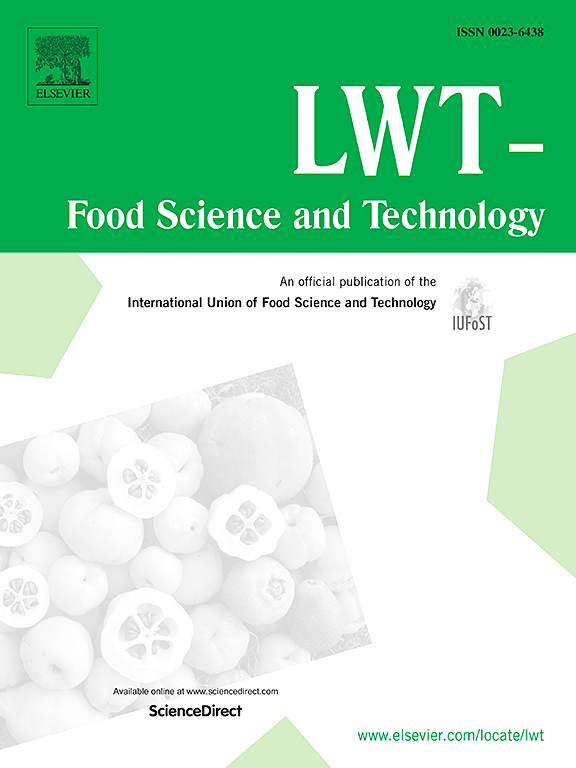从与冰鲜鸡有关的各种来源中分离出的两种气单胞菌噬菌体的特征和基因组分析
IF 6
1区 农林科学
Q1 FOOD SCIENCE & TECHNOLOGY
引用次数: 0
摘要
气单胞菌是冷鲜肉中的一种主要腐败菌,也是鱼类养殖中的一种重要致病菌和腐败菌。噬菌体是抗生素的一种可行替代品,可以有针对性地消灭气单胞菌,最大限度地减少环境压力。在这项研究中,从屠宰环境和冰鲜鸡肉产品中采集的样本中分离出了两种气单胞菌噬菌体(P36 和 P40)。P36 和 P40 的宿主范围相同。它们的最佳感染倍数(MOI)为 0.001,裂解时间分别为 120 分钟和 180 分钟。这些噬菌体在 4-40 °C 的温度范围和 5-11 的 pH 值范围内都能稳定存活。形态学和基因组分析表明,这两种气单胞菌噬菌体属于头状病毒目、头状病毒科、Autographivirinae亚科。这两种噬菌体的基因组由线性双链DNA(dsDNA)组成,长度分别为41,454 bp和41,484 bp。值得注意的是,这两种噬菌体的基因组中没有与毒力、抗生素抗性或溶解性等安全因素相关的编码基因。这一发现表明,这两种噬菌体在食品安全和治疗方面具有潜在的应用价值。本文章由计算机程序翻译,如有差异,请以英文原文为准。
Characterization and genome analysis of two Aeromonas phages isolated from various sources related to chilled chicken
Aeromonas is a primary spoilage bacterium found in chilled meat and serves as a significant pathogenic and spoilage agent in fish culture. Bacteriophages present a viable alternative to antibiotics for the targeted elimination of Aeromonas, minimizing environmental stress. In this study, two Aeromonas phages, P36 and P40, were isolated from samples collected in the slaughtering environment and from chilled chicken products. Both P36 and P40 exhibit the identical host range. They have optimal multiplicities of infection (MOI) of 0.001, with lysis times of 120 min and 180 min, respectively. These phages demonstrate stable survival within a temperature range of 4–40 °C and a pH range of 5–11. Morphological and genomic analyses indicate that the two Aeromonas phages belong to the order Caudovirales, family Podoviridae, subfamily Autographivirinae. The genomes of the two phages were composed of linear double-stranded DNA (dsDNA) with lengths of 41,454 bp and 41,484 bp, respectively. Notably, there were no coding genes associated with safety factors such as virulence, antibiotic resistance, or lysogenicity present in the genomes. This finding indicates that the two phages possess potential applications in food safety and therapeutic contexts.
求助全文
通过发布文献求助,成功后即可免费获取论文全文。
去求助
来源期刊

LWT - Food Science and Technology
工程技术-食品科技
CiteScore
11.80
自引率
6.70%
发文量
1724
审稿时长
65 days
期刊介绍:
LWT - Food Science and Technology is an international journal that publishes innovative papers in the fields of food chemistry, biochemistry, microbiology, technology and nutrition. The work described should be innovative either in the approach or in the methods used. The significance of the results either for the science community or for the food industry must also be specified. Contributions written in English are welcomed in the form of review articles, short reviews, research papers, and research notes. Papers featuring animal trials and cell cultures are outside the scope of the journal and will not be considered for publication.
 求助内容:
求助内容: 应助结果提醒方式:
应助结果提醒方式:


